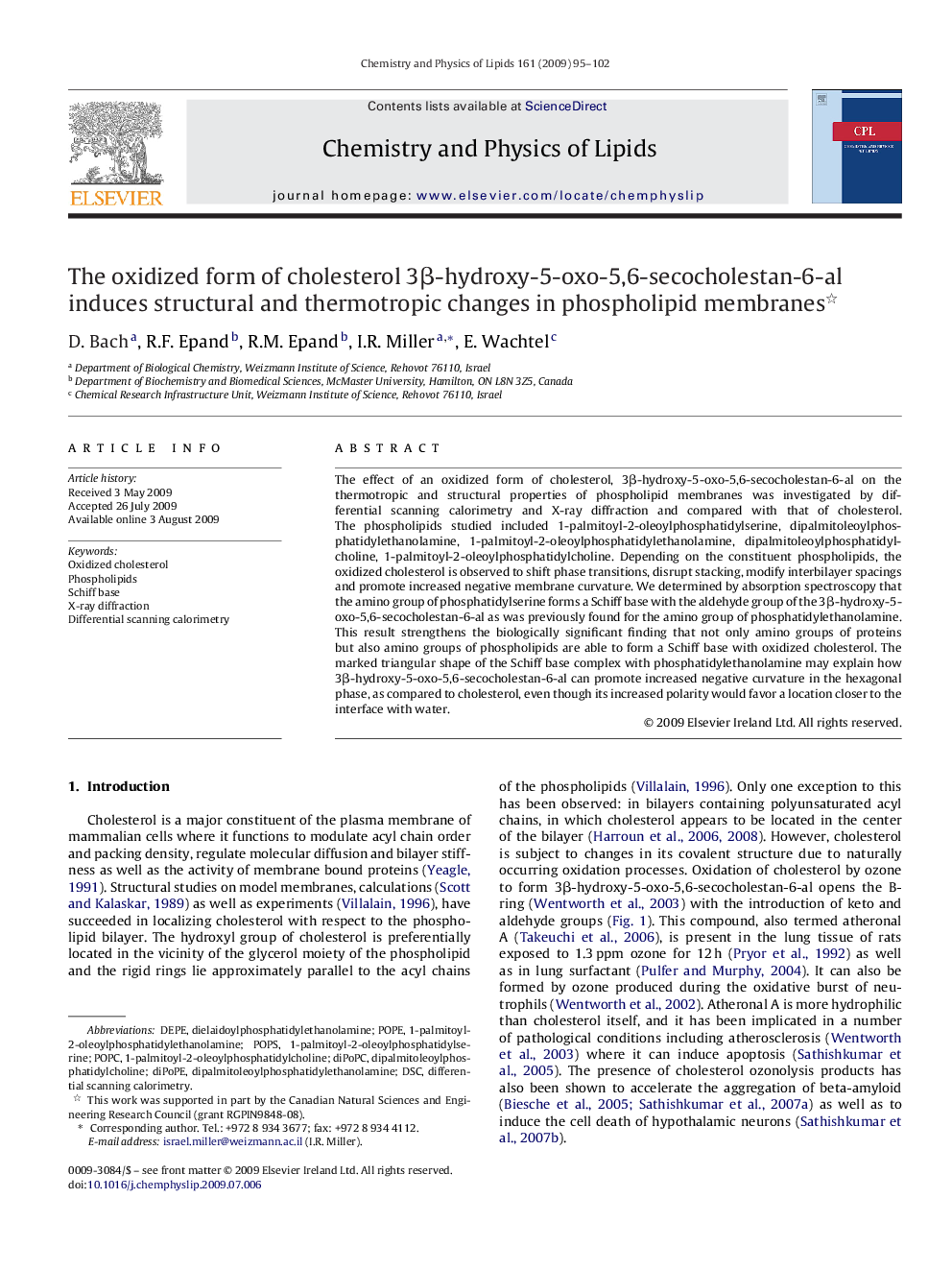| Article ID | Journal | Published Year | Pages | File Type |
|---|---|---|---|---|
| 1252184 | Chemistry and Physics of Lipids | 2009 | 8 Pages |
The effect of an oxidized form of cholesterol, 3β-hydroxy-5-oxo-5,6-secocholestan-6-al on the thermotropic and structural properties of phospholipid membranes was investigated by differential scanning calorimetry and X-ray diffraction and compared with that of cholesterol. The phospholipids studied included 1-palmitoyl-2-oleoylphosphatidylserine, dipalmitoleoylphosphatidylethanolamine, 1-palmitoyl-2-oleoylphosphatidylethanolamine, dipalmitoleoylphosphatidylcholine, 1-palmitoyl-2-oleoylphosphatidylcholine. Depending on the constituent phospholipids, the oxidized cholesterol is observed to shift phase transitions, disrupt stacking, modify interbilayer spacings and promote increased negative membrane curvature. We determined by absorption spectroscopy that the amino group of phosphatidylserine forms a Schiff base with the aldehyde group of the 3β-hydroxy-5-oxo-5,6-secocholestan-6-al as was previously found for the amino group of phosphatidylethanolamine. This result strengthens the biologically significant finding that not only amino groups of proteins but also amino groups of phospholipids are able to form a Schiff base with oxidized cholesterol. The marked triangular shape of the Schiff base complex with phosphatidylethanolamine may explain how 3β-hydroxy-5-oxo-5,6-secocholestan-6-al can promote increased negative curvature in the hexagonal phase, as compared to cholesterol, even though its increased polarity would favor a location closer to the interface with water.
